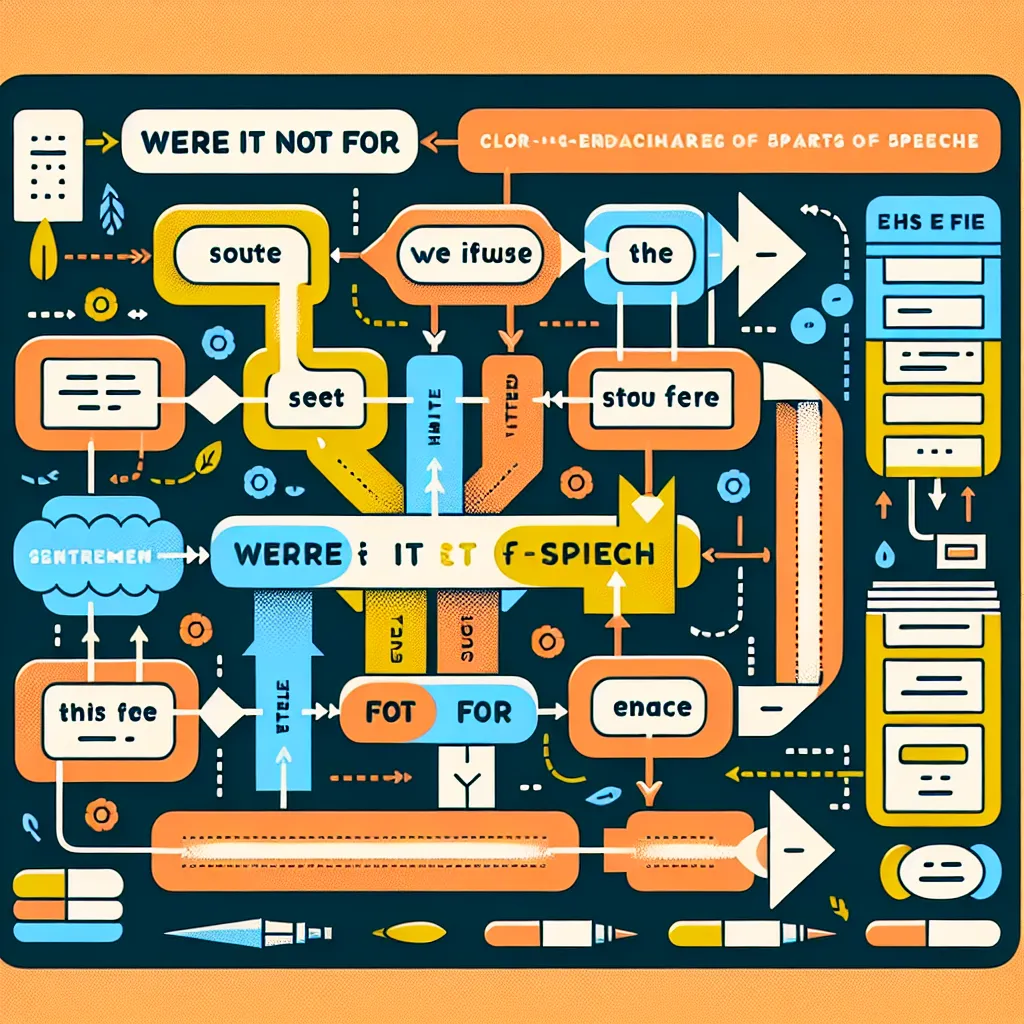The conditional structure “were it not for” is a sophisticated grammatical construction that can significantly elevate your IELTS performance. This powerful phrase allows you to express hypothetical situations with elegance and precision, making it a valuable tool for achieving higher band scores in both the Writing and Speaking sections of the IELTS exam.
Understanding the “Were It Not For” Structure
“Were it not for” is an inverted conditional structure used to express gratitude or to speculate about how a situation might be different if a particular factor were absent. It’s equivalent to saying “if it were not for” or “without,” but carries a more formal and literary tone.
Grammatical Formula
The basic structure is:
Were it not for + noun/noun phrase, + subject + would/could/might + verb
This formula creates a hypothetical conditional sentence, where the “were it not for” clause represents the condition, and the main clause expresses the result.

Applying “Were It Not For” in IELTS Writing
Incorporating this structure into your IELTS Writing can demonstrate a high level of grammatical control and vocabulary usage. Here are some examples of how you might use it in different types of IELTS Writing tasks:
Task 1 (Academic)
While “were it not for” is less common in Task 1 Academic writing, it can be used to speculate about data:
“Were it not for the sudden increase in oil prices in 2008, the graph would likely show a more gradual upward trend in transportation costs.”
Task 1 (General)
In a formal letter, you might write:
“Were it not for your company’s excellent customer service, I would have switched to a different provider long ago.”
Task 2
This structure is particularly useful in Task 2 essays for presenting hypothetical scenarios:
“Were it not for strict environmental regulations, many species would likely be extinct by now.”
“Were it not for advancements in medical technology, life expectancy would be significantly lower in most developed countries.”
Enhancing IELTS Speaking with “Were It Not For”
In the Speaking test, using “were it not for” can showcase your ability to handle complex grammar structures spontaneously. Here are some examples:
Part 1:
Examiner: “What do you like about your hometown?”
You: “I love the sense of community in my hometown. Were it not for the close-knit nature of our neighborhood, I might not have such fond memories of growing up there.”
Part 2:
When describing a person who has influenced you:
“Were it not for my high school English teacher, I might never have discovered my passion for literature. Her enthusiasm was truly contagious.”
Part 3:
Discussing environmental issues:
“Were it not for international cooperation on climate change, we would be facing an even more dire environmental situation today.”
Achieving Higher Band Scores with “Were It Not For”
Using “were it not for” correctly can contribute to higher band scores in the following ways:
- Grammatical Range and Accuracy (Band 7-9): Demonstrates the ability to use complex grammatical structures accurately.
- Lexical Resource (Band 7-9): Shows sophisticated control of lexical features.
- Coherence and Cohesion (Band 7-8): Helps in developing clear arguments and speculative points.
Compare these sentences to see the progression in sophistication:
Band 5-6: “Without strict rules, many animals would die.”
Band 7-8: “If it weren’t for strict regulations, many species would face extinction.”
Band 8-9: “Were it not for rigorous conservation efforts, numerous species would undoubtedly be on the brink of extinction.”
Common Mistakes to Avoid
-
Incorrect verb form:
Incorrect: “Were it not for the rain, we will go to the park.”
Correct: “Were it not for the rain, we would go to the park.” -
Mixing tenses:
Incorrect: “Were it not for his help, I didn’t finish the project.”
Correct: “Were it not for his help, I wouldn’t have finished the project.” -
Using “was” instead of “were”:
Incorrect: “Was it not for the traffic, I’d be on time.”
Correct: “Were it not for the traffic, I’d be on time.” -
Forgetting the comma:
Incorrect: “Were it not for the scholarship I couldn’t attend university.”
Correct: “Were it not for the scholarship, I couldn’t attend university.”
Conclusion
Mastering the “were it not for” structure can significantly enhance your IELTS performance. It allows you to express complex ideas concisely and elegantly, demonstrating a high level of English proficiency. Practice using this structure in various contexts to become comfortable with it before your IELTS exam. Remember, while it’s a powerful tool, it should be used judiciously and in conjunction with a range of other advanced structures to showcase your full linguistic capabilities.
To further hone your skills, try incorporating “were it not for” into practice essays on topics like technological advancements, historical events, or personal achievements. This will help you become more adept at using this sophisticated structure in your IELTS Writing and Speaking tasks.